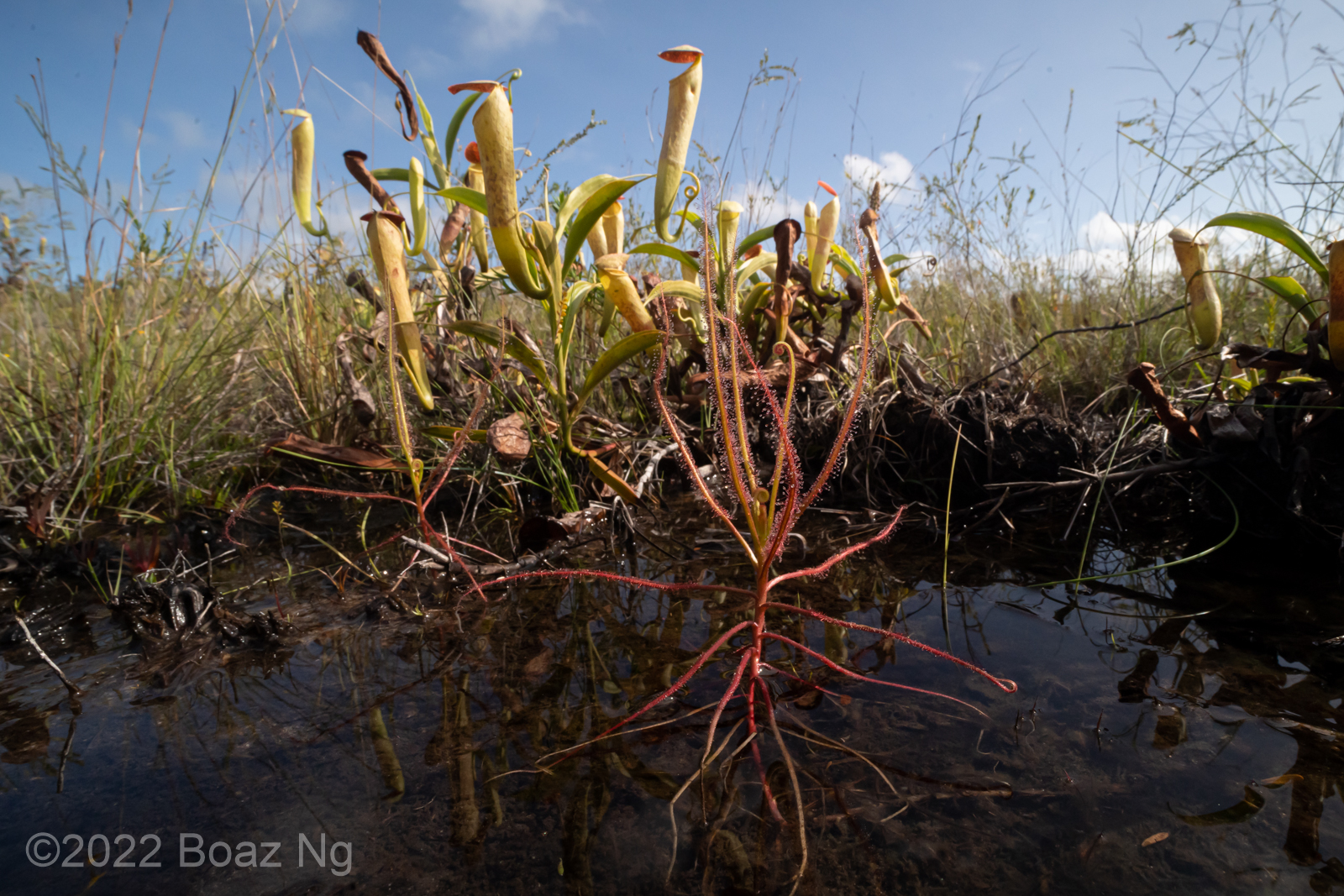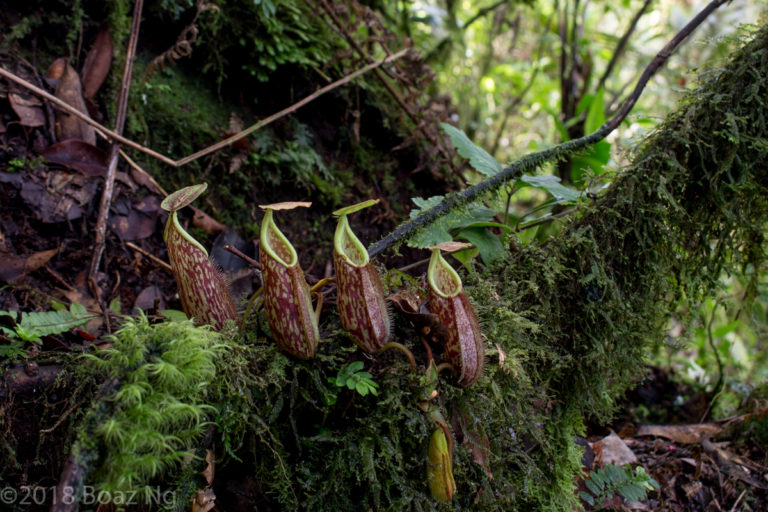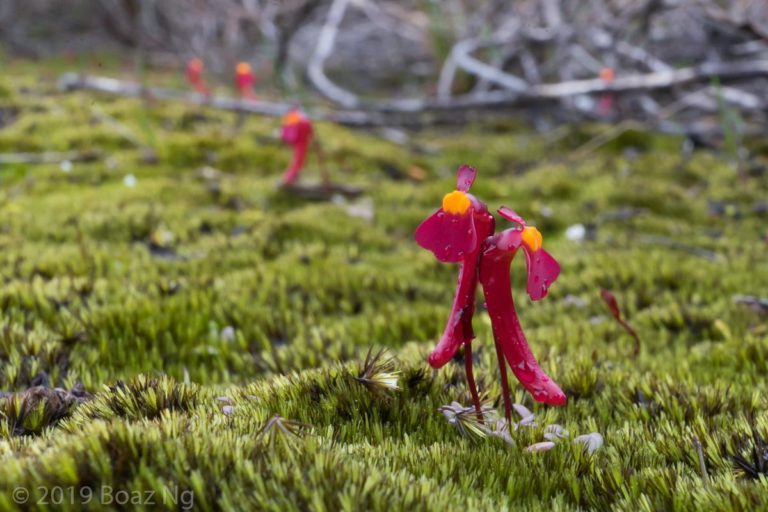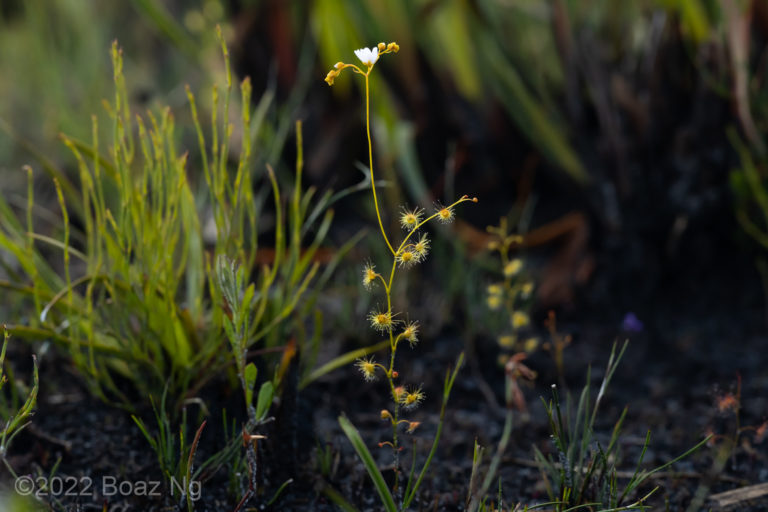The northernmost swamps of the Cape York Peninsula are some of the most biodiverse carnivorous plant habitats in the world. Over twenty species of carnivorous plants across three genera are found on the floodplains of the Jardine River and Jackey Jackey Creek.
The tropical pitcher plants are amongst the most striking of the carnivorous flora. There are four recognised species, each occupying a different niche within the floodplain. These taxa are early in the process of evolutionary divergence so there are countless hybrids and intermediates that fully bridge the phenotypes of the plants but it is nonetheless easy to recognise four main groups.
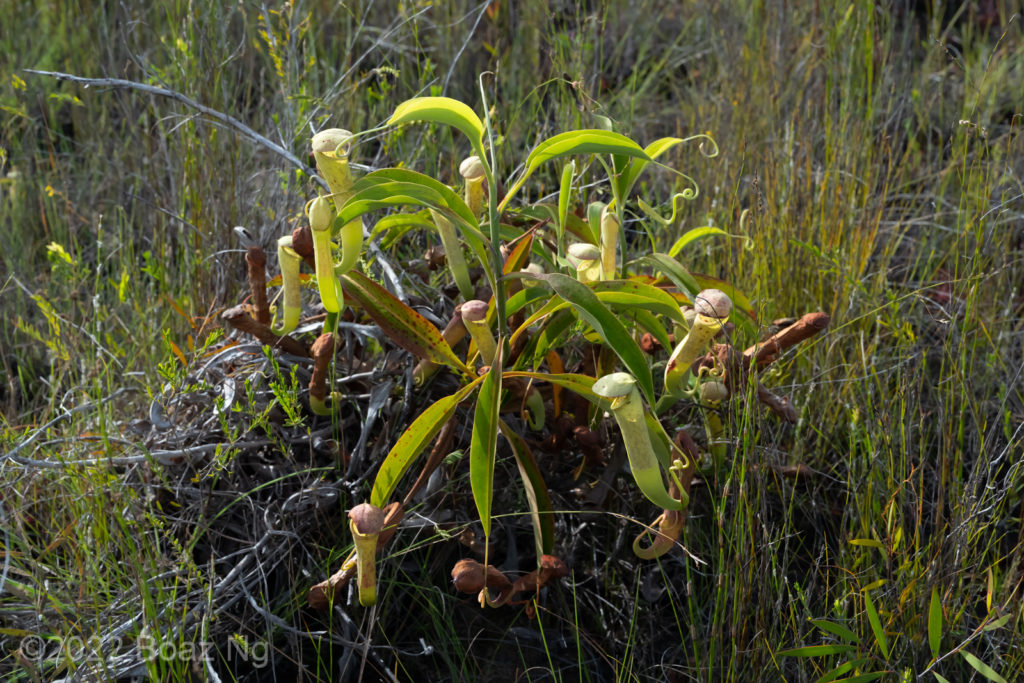
Nepenthes mirabilis is the most common pitcher plant in Cape York, occupying the sandy periphery of the swamps, as well as the sides of smaller creeks in the headwaters of the drainage basin. The species is recognised by its moderate proportions – slender, medium-sized pitchers with a prominent ‘hip’ that is borne on a moderately long tendril with a strong propensity to twine around surrounding plants for support.
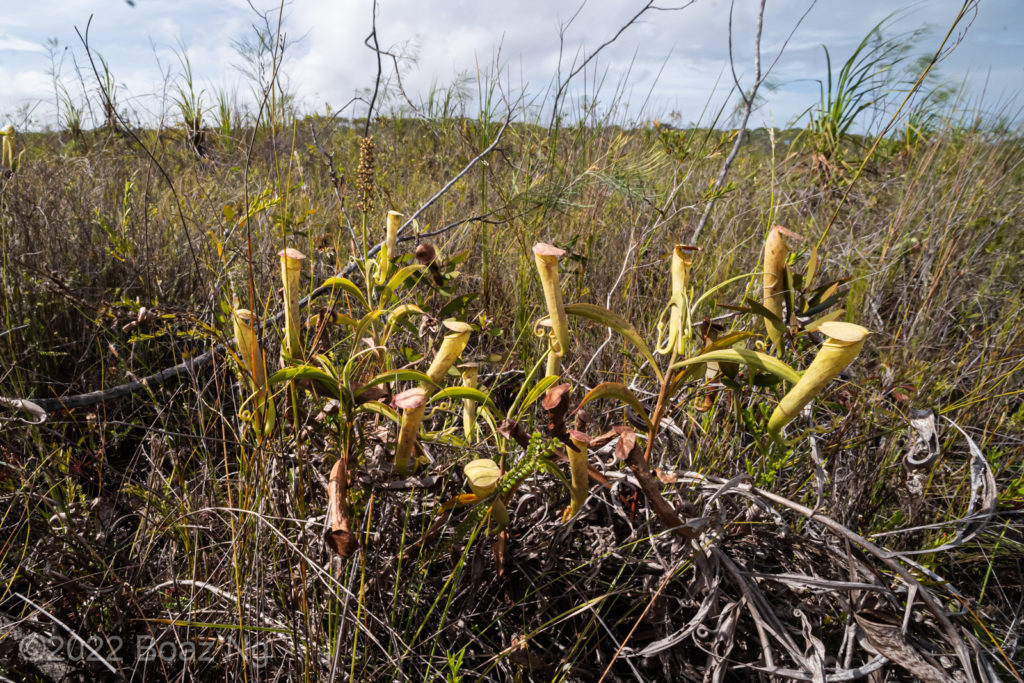
As you walk deeper into the floodplain, the ground soon becomes waterlogged. Trees are unable to grow in the seasonally inundated and perennially wet substrate, resulting in an open, sunny expanse vegetated mostly with sparse sedges. It is in this environment that Nepenthes tenax occurs. In mature plants, only upper pitchers that are yellowish-green and very narrow are formed. The leaves are tightly folded and have short, coiled tendril that is stiff enough to elevate the pitcher high above the petioles, even in the absence of any supporting foliage.
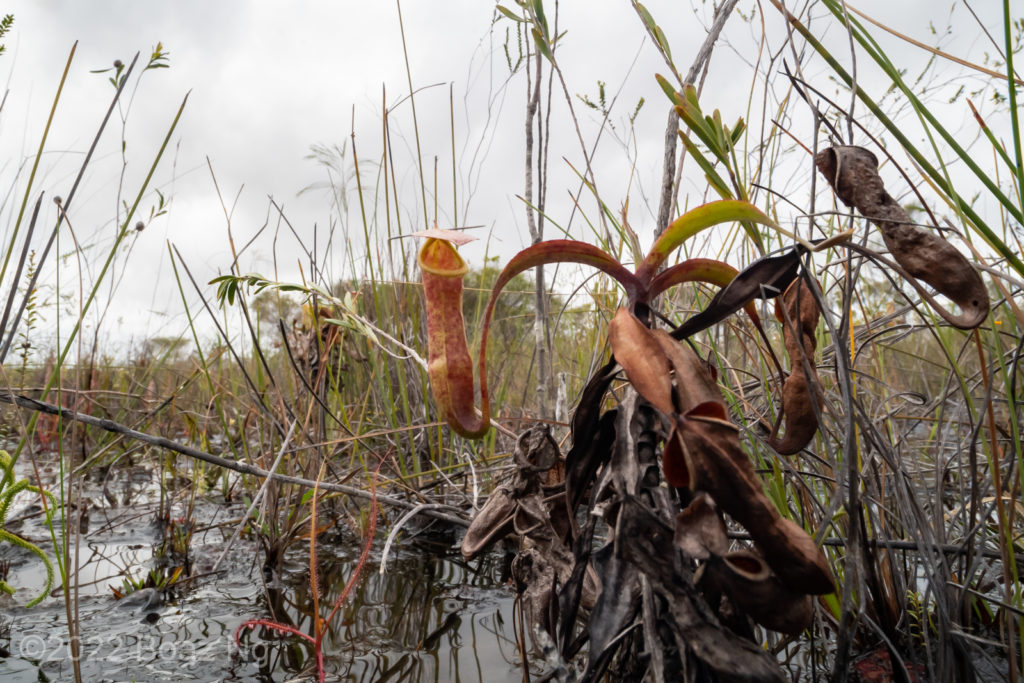
If you dare to walk even deeper into the floodplain, the substrate becomes a loosely consolidated peat that sucks your shoes into the muck. It is here in the wettest parts of the swamp that Nepenthes parvula is found. The species is identified by its small size, with a reddish rosette that is about as large as a hand span. Intermediate pitchers are predominately formed, with a non-coiling, non-twining tendril that points the pitchers inwards at an oblique angle. True upper pitchers with a stiff coiling tendril are formed immediately before the inflorescence.
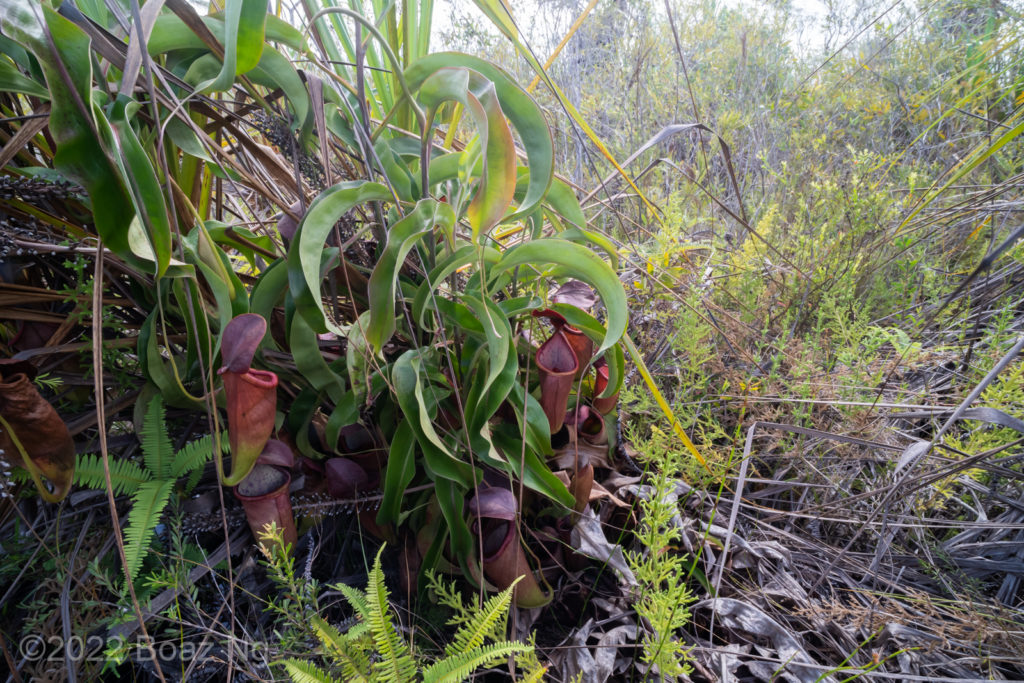
Within the open expanse of the floodplain, disjunct patches of bushes, ferns and sedges occur in slightly raised accumulations of foliage. It is among this growth that Nepenthes rowaniae occurs. This plant is recognised by its giant size with large sickle-shaped leaves, and voluminous pitchers with a pitcher hip that is just below the peristome. The tendrils are charictaristically long, placing the lower pitchers directly on the ground and the upper pitchers hanging low.
As stunning as the pitcher plants are the sundews which are extremely prolific in the floodplains of Cape York. Just about every bit of available substrate is colonised by some form of Drosera, which attain a beautiful deep red colouration in the blaring tropical sun.
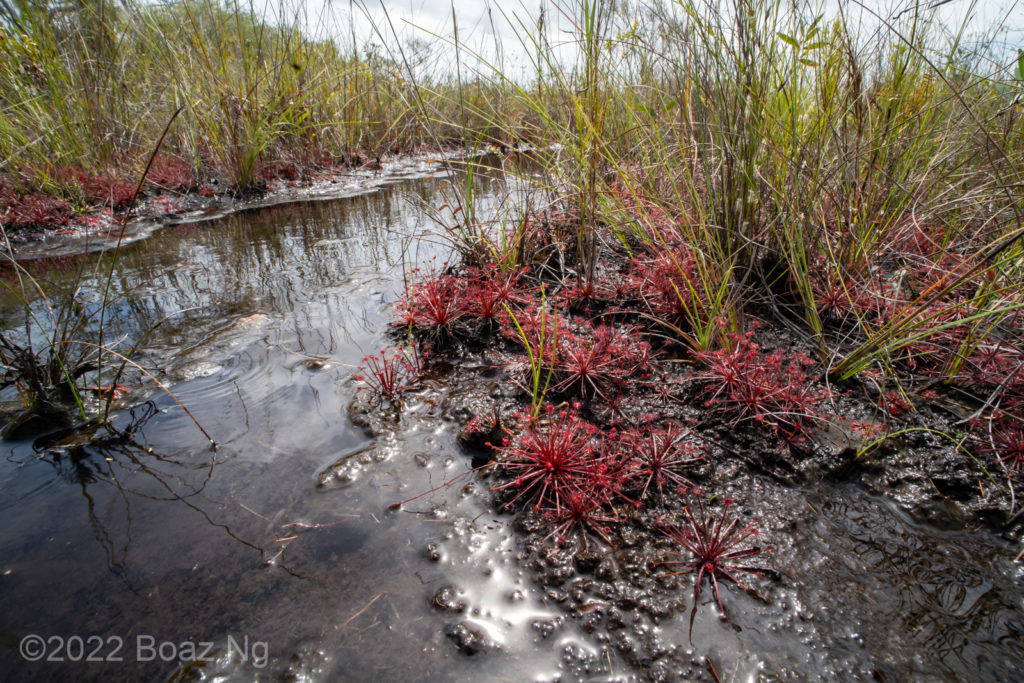
Drosera petiolaris is very abundant as the ground begins to become waterlogged. The sundew appears as a spiky ball, with many straight, narrow leaves that radiate from a central point. As a rosetted species, the growing point prefers to be dry although its roots certainly don’t mind being wet.
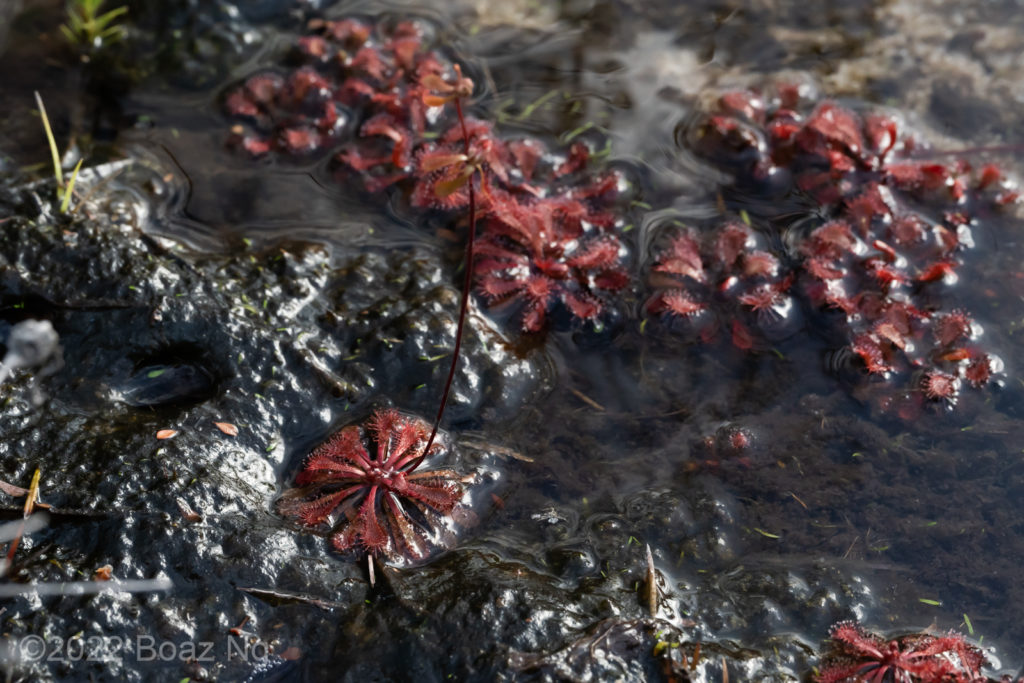
Growing in the same waterlogged habitat just above the inundation level is Drosera spatulata. The plants in the Northern Peninsula region are consistently ruby red in colouration.
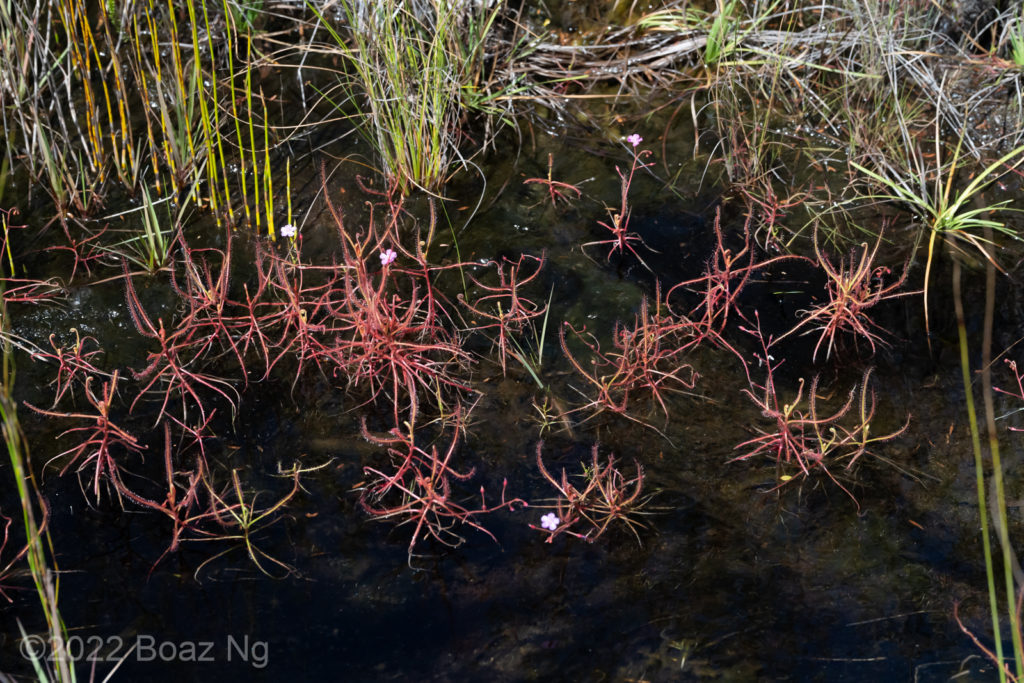
Drosera serpens is the largest sundew in Cape York, with spider-like arms and a buoyant stem that keep the active growing point upright. In these perennial swamps, the species attains a greater size owing to the stable growing conditions. It is not picky about its substrate, often floating unanchored atop a suspended layer of swamp slime.
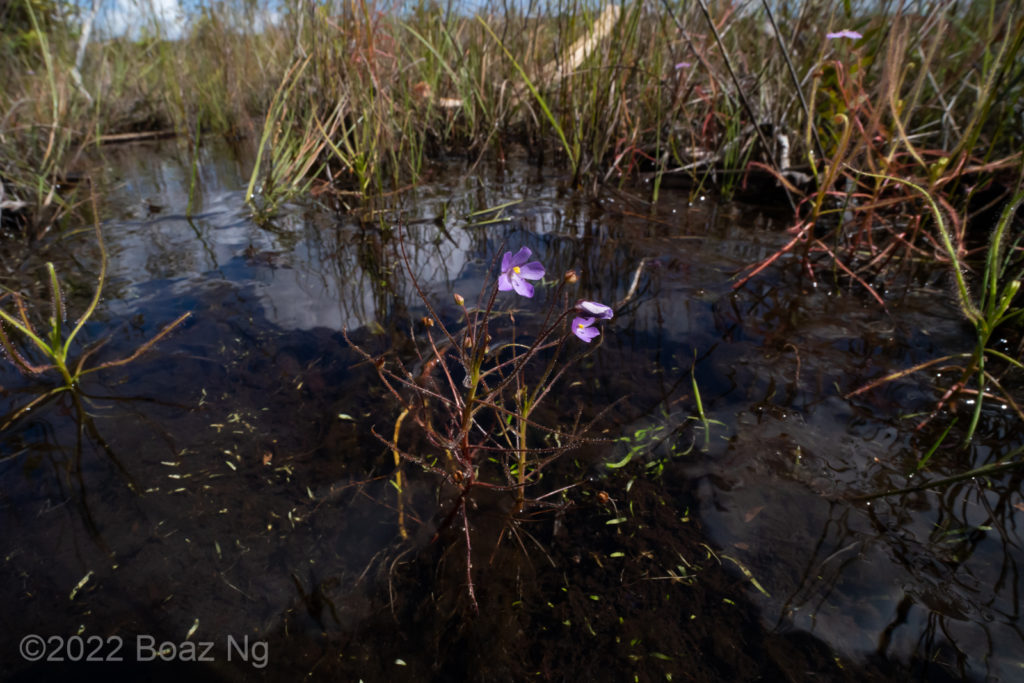
Growing in a similar manner is Byblis aquatica. As its name suggests, this species of rainbow plant is named for its preference for the wettest niches. The purple flowers are raised atop an erect stem, which gradually elongates as the plant grows. The old stem trails on the surface of the water and can reach lengths in excess of 40 cm.
There are many types of bladderwort that call the Cape York floodplains home. Several species stand out with their unusual morphologies or en masse blooming displays.
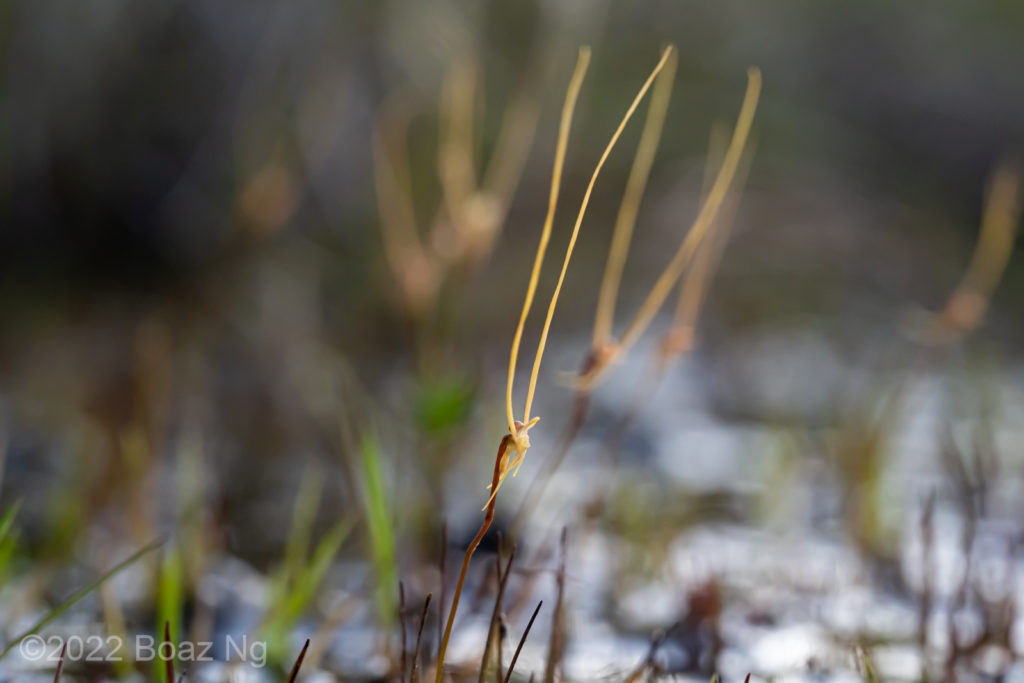
The most interesting flower shape belongs to Utricularia lowriei. Two very long and thin protrustions extend upwards from the lower corolla lip like the antennae of an insect, while three shorter ones hang downwards like a beard. It has been suggested that the plant is using biomimickry to attract a pollinator but I was unable to observe the process despite staying past sunset.
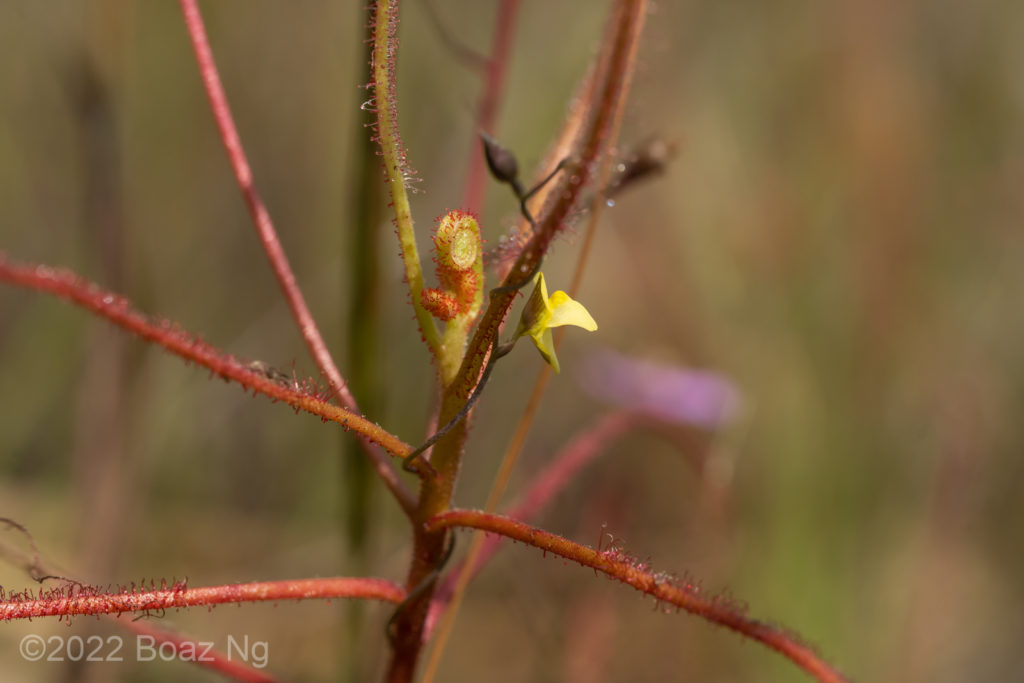
Another interesting bloom is that of Utricularia circumvoluta. The species has a very thin peduncle that spirals around surrounding plants to elevate the flowers. The bladderwort grows in waterlogged substrates in the wetter parts of the floodplain.
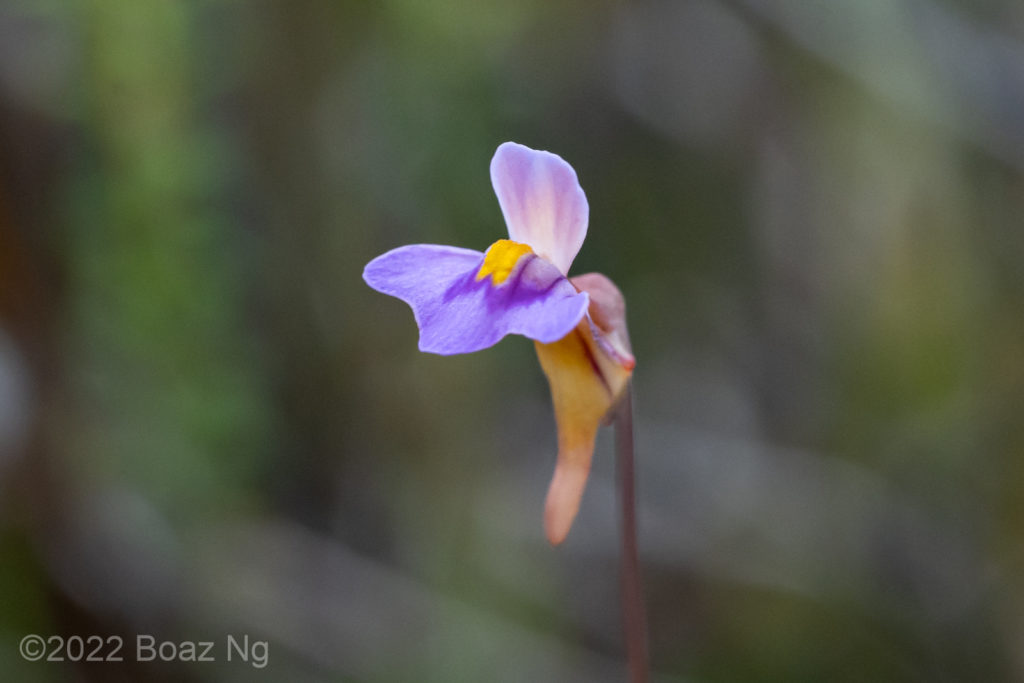
Owing to the remoteness of northern Cape York, many species still remain undescribed or poorly characterised. One example of a recent taxonomic change is Utricularia brennanii, which is common in the floodplains of the peninsula. The species is closely related to U. lasiocaulis and was previously regarded as an ‘east coast form’ but can be distinguished by its consistently smaller lower corolla lip.
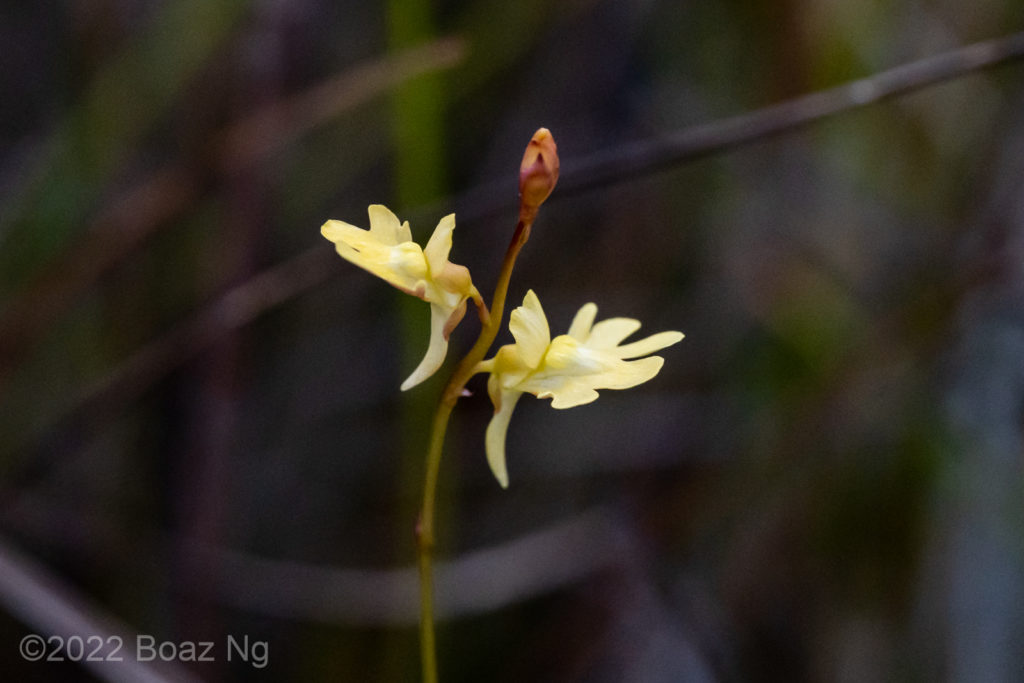
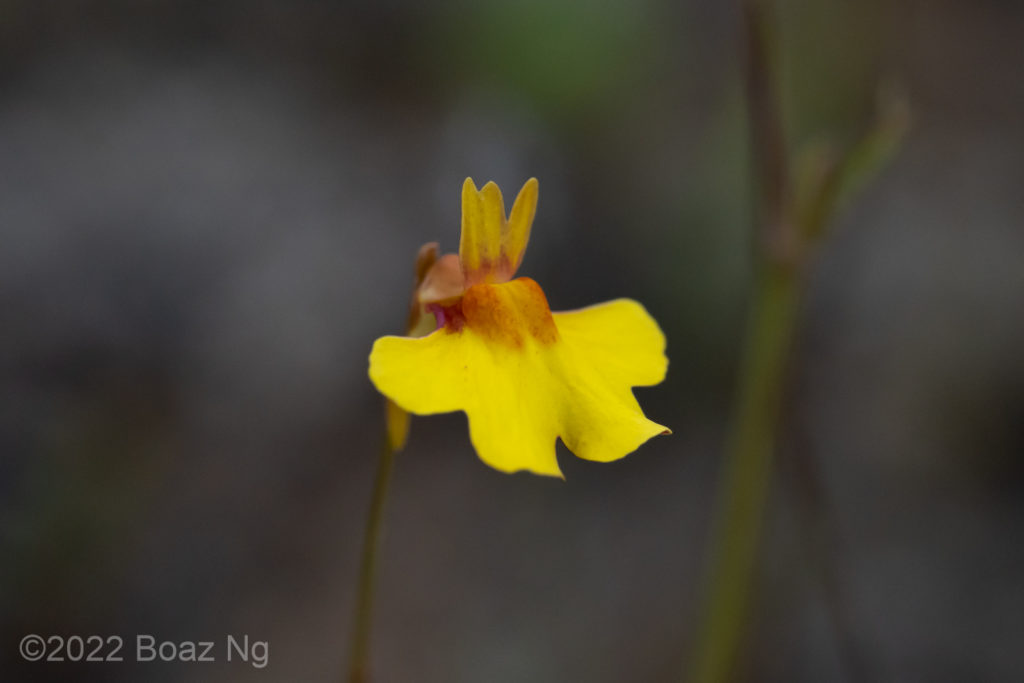
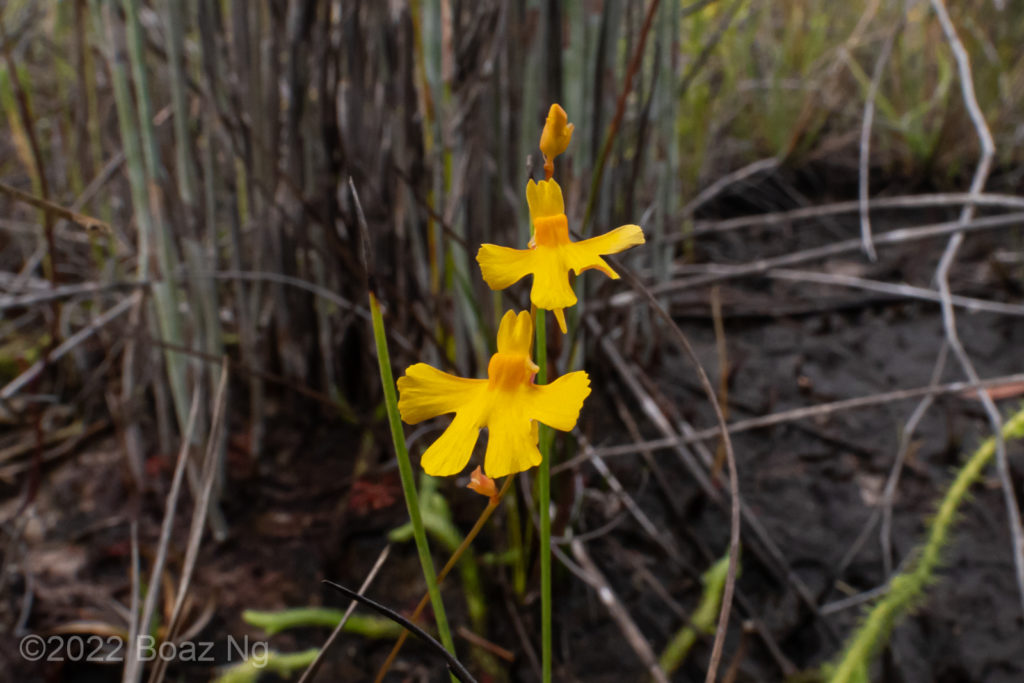
At the sandy periphery of the swamps grows Utricularia chrysantha. This species is identified by its tall scapes and yellow flowers with bulbous centres and several lobes on the lower corolla lip. There is a lot of variation in both the shape of the flower and the shade of yellow.
Although poor in nutrients, the floodplains of Cape York are incredibly biodiverse, especially in carnivorous plants!

